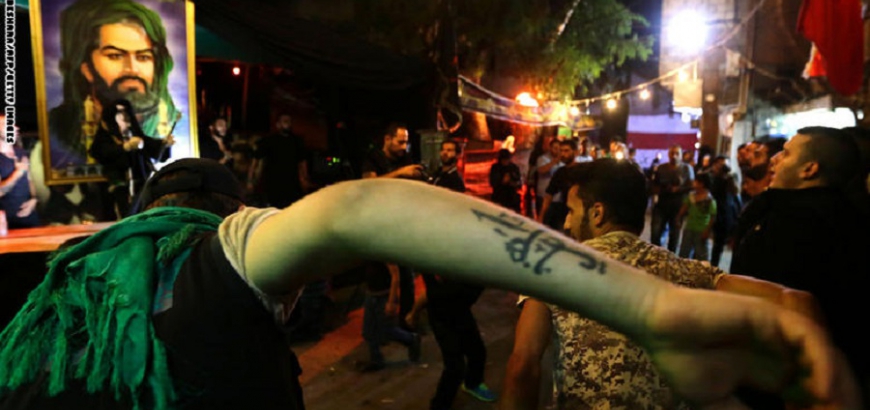The people of Damascus have never seen this sort of blackness in their districts and streets before the establishment of the Shiite militias and those loyal to them in their special ceremonies on the day of Ashoura, which happened on Tuesday, according to Damascus residents.
A media activist from the opposition Al-Muhajireen coordination council, Mohamed al-Shami, told Alsouria Net that crowds of Shiites arrived to Damascus to practice their rituals in the city, and visit the “sacred shrines,” such as the Sayeda Zainab shrine.
The activist said that Iran was behind the phenomena Damascus was witnessing these days, and that, “Some majority Shiite districts in Damascus such as the Zein al-Abidin neighborhood in the Muhajireen area and the Al-Amin area in Shaghour, have begun to practice their rituals openly.” He said that, “They have large influence and support from the regime.”
The city’s residents have been pained by what they had begun to see in their streets and on the walls of their districts, as Shami said that Shiite publications written in Farsi had begun to spread in Old Damascus, calling on all to join Shiite campaigns and occasions funded and supported by Iran.
Shami noted that the crowds arriving to Damascus were coming from Iraq, Iran and Lebanon, and some from east Asia, turning the areas which are under Iranian influence into something like military zones as armed militias surround them with checkpoints and have the power to allow in pedestrians from outside the neighborhood or block them, according to the activist.
In addition, these districts are not intended for their residents only, with a number of others who have rented houses or operate their business there.
In the streets of the capital, Shami said that the phenomenon of flogging had spread widely, in addition to the green bands placed on the wrists. It is known that these bands have written on them sectarian expressions about revenge for Hussein.
Shami said that this phenomenon had increased over the days ahead of Ashoura, and said that what was happening in Damascus was an occupation of the city with the agreement and protection of the regime and its security branches.
As for the vast majority of Damascus residents, Shami said that they were unable to express their rejection of this spreading phenomenon of Shiification out of fear that the regime would punish them. According to him, “the fire which was started in Asrouniyeh (April 23) occurred because the traders in the old market had refused to sell their shops to Iran.”
This article was translated and edited by The Syrian Observer. Responsibility for the information and views set out in this article lies entirely with the author.


